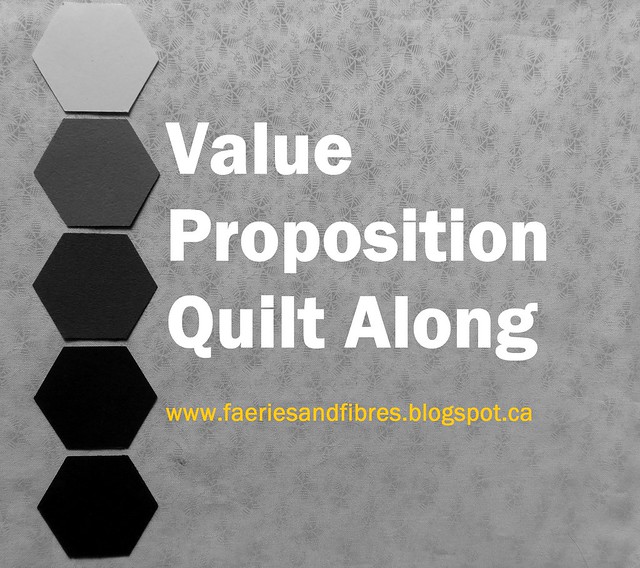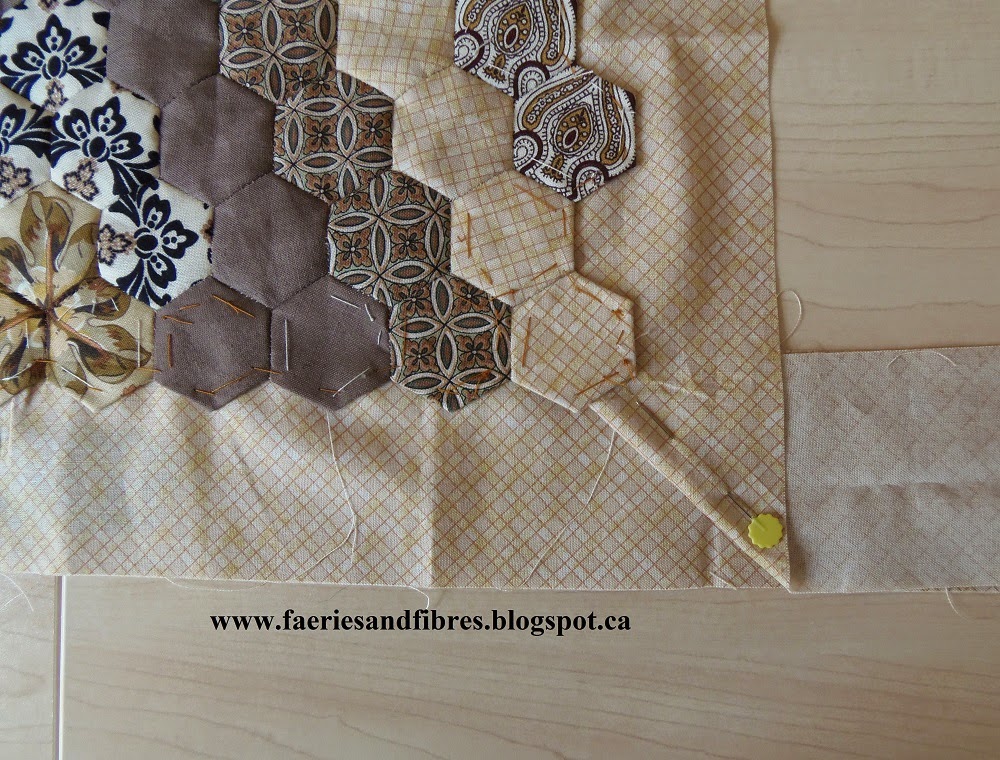Looks like there is some interest in learning about my plan for constructing
Lozagons so that's what today's post will be all about! This is a picture of the original quilt that was published on Lorraine's blog,
Granny Loz.
I usually do a sketch of my quilt before I get started so that I have a road map. In so doing it helps understand the quilt and it allows me to identify the type and number of units that make up my quilt. It also gives me ideas about constructing the quilt in sections.
This is my sketch of Lozagons. I sometimes colour in my sketch with felt tip markers. The top and bottom of the quilt will be the same but I didn't sketch the bottom portion.
There are three basic units in this quilt. The first is a medallion of roses surrounded by a white background and pink hexagons; it is the centre of the quilt.
Rose medallion
The balance of the quilt is constructed from two units that I describe as passion flowers and snowflakes (turquoise). This is my diagram for the construction of passion flowers. It doesn't look like much in the picture but it will when it is attached to the snowflakes. The centre of each passion flower is a solid fabric. The first round of hexagons is a print, the second a different solid, the third is made up of two prints, six of one and twelve of the other. The final round is made up of six turquoise (this will form the points of the snowflakes) and eighteen of a single print.
Diagram of passion flower
This is a picture of a
passion flower stitched together. All of my
passion flowers are made like this except for six of them that will have only four turquoise hexagons. More on this in a bit!
Passion flower
To make the turquoise
snowflakes I start out by making a pile of rosettes.
Rosettes
Each rosette will need three hexagons added to it to make a triangle. The remaining points of the snowflake are created by the turquoise hexagons in the passion flower blocks.
Snowflake triangles
Once I have my
rose medallion,
snowflake triangles and
passion flowers I am ready to construct the quilt.
To construct the centre of the quilt I will use the
rose medallion and the six passion flowers with only four turquoise hexagons. I will also need to construct six "
crown" shapes that are coloured royal blue in my diagram. They are made of eight hexagons. These
crowns will fill the spaces between the passion flowers and the
rose medallion. I stitched it to the lower left edge of the passion flower (you can see the crown fits in one of the two spaces that did not have a turquoise hexagon. I've marked a red circle to identify those spots. A
snowflake triangle coloured in turquoise was sewn to the right side of the passion flower. I constructed six units in this manner.
These are the six
passion flower units arranged around the
rose medallion. I will stitch the six units together to create an "open donut". It is the same technique that I use to construct the
passion flowers and you can read about it
here. This is then stitched to the centre medallion and the open donut is closed. I like to work in this manner because it provides long continuous seams and that minimizes the number of starts and stops.
The next step was to attach a
passion flower with
snowflake triangles to either side to create a large diamond shape. If you examine the passion flower with the deep pink solid on the far right side you can see I attached two
snowflake triangles, one on the upper left and the other on the lower left. This unit was then sewn to the quilt. I made a second unit (the
passion flower with gold solid on the left) and attached it to the quilt.
This is my plan for constructing the balance of the quilt. The unit shown above is labelled A on my diagram. I will construct section B and attach it to the quilt. Section C is next followed by D, E and so on.
To construction section B I will need two
passion flowers. To the first flower I will attach a pair of
snowflake triangles. This will create a large diamond.
To the second
passion flower I will sew two
snowflake triangles like this.
To construct section B I will place the two units like this.
This is what the two diamonds will look like when they are sewn together. You can see the
passion flowers and the
snowflakes starting to emerge.
I generally construct several units before attaching them to the quilt. The reason is that they are still relatively portable but once I start stitching them to the quilt it becomes less so. I'll share more pictures of the construction of
Lozagons as it grows.
So there you have it! I hope that this was helpful and informative. If you have any questions please feel free to ask because I am always willing to share. I reply to every comment so if you don't hear back from me it means you are a no reply blogger. No reply bloggers can always leave their email address in the comment; just replace the @ sign with (at) (for example faeriesandfibres(at)gmail.com) and I'll be able to reply to you!
I'm linking up with
HeLP for Hexie-aholics over at
Sarah Did It! Pop on over to see what others are doing with hexagons!
Until I post again, happy sewing!
Karen H

































.jpg)








.jpg)






